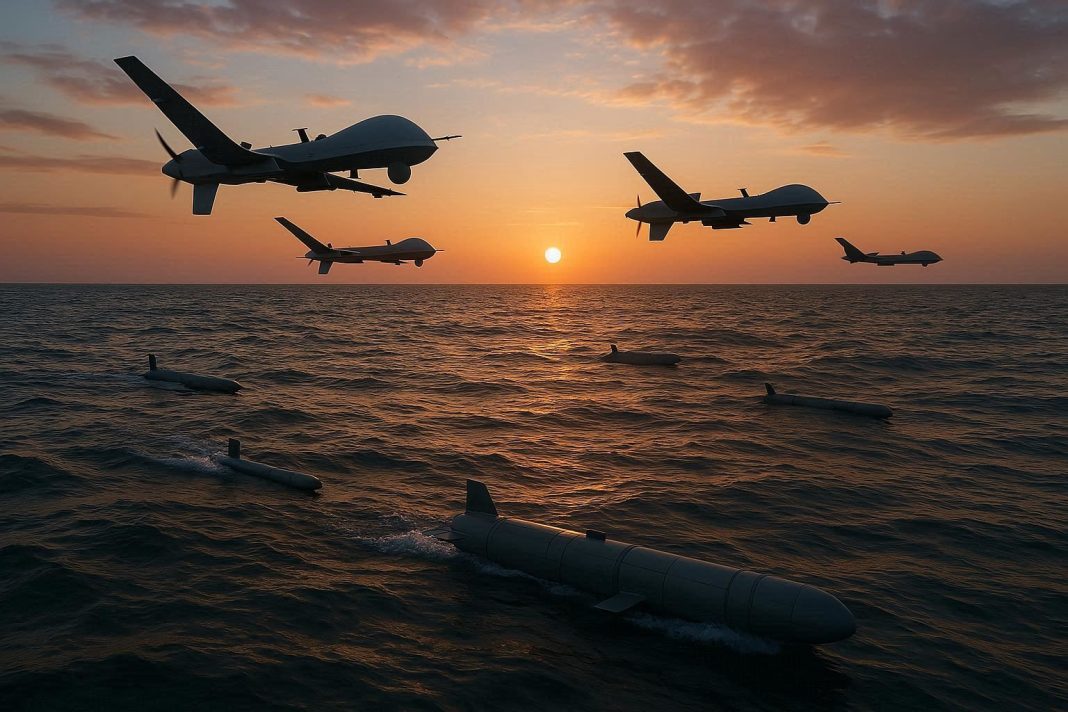NATO and its allies are intensifying defense training and operations as airspace violations increase across Europe. Recently, an annual NATO exercise in Portugal showcased how the military is bringing defense technology companies closer to real battlefield conditions. The goal is to test new technologies in realistic scenarios while helping soldiers understand modern warfare better.
NATO Takes Defense Training to the Next Level
The event featured drones flying above and underwater, soldiers using virtual reality (VR) headsets, and real-time monitoring on large digital maps. A nuclear submarine also participated, sailing near the Portuguese Navy Operational Experimentation Centre (CEOM) in Tróia. These demonstrations were part of the largest unmanned maritime system exercise, REPMUS 2025, which ran for three weeks and included 24 allied nations.
Navies were divided into red and blue teams, conducting simulated missions against each other. Ukraine participated for the first time as part of the red team, operating 61 drones, 57 unmanned surface vehicles (USVs), and one unmanned ground vehicle. The exercise aimed to test both the technology and the strategies used by different countries, with a special focus on drone operations, including jamming trials to simulate combat-like conditions.
Deadly strikes in Kyiv push NATO to unleash air-defense power in Baltic
Technology and Defense Training in Action
Drones played a central role in this year’s exercises, reflecting their growing importance in European defense. Norway, Estonia, Poland, Bulgaria, and Romania have faced hybrid threats in recent weeks, emphasizing the need for advanced unmanned systems. Daily jamming trials tested how drones could operate in contested environments, mirroring the electronic warfare seen in conflicts such as in Ukraine.
The exercise also allowed allies to learn from Ukraine’s frontline experiences. Ukrainian teams demonstrated how to use simpler, cost-effective systems efficiently, offering lessons to countries with more complex and expensive technology. The exchange of tactics and procedures between allies helps ensure that all units can operate together smoothly during real operations. This aspect of defense training is crucial, as it provides hands-on experience in coordinating unmanned systems under simulated combat conditions.
Trump threatens NATO with ultimatum: no unity, no sanctions on Russia
Defense technology companies actively tested their latest offerings in collaboration with the military. European companies experimented with AI-enabled drones that analyze situations on land and at sea. They also launched kamikaze-style drones from different platforms, deployed hydrogen-powered blimp-like drones to collect critical data, and operated systems designed to resist GPS jamming. Soldiers and tech teams tested these technologies during defense training, gaining firsthand experience of their practical applications in real scenarios.
Creating a Cutting-Edge Testing Ground
The NATO exercise also provided a platform for companies, academics, and militaries to work together in a unique environment. Tróia offers a free tech zone covering 2,600 square kilometers, where activities normally restricted by regulations can be carried out freely. This allows for testing marine and aerial equipment under realistic conditions that are not possible elsewhere in Portugal, which is essential for comprehensive defense training.
Companies like Akheros and RhineMetall showcased their latest AI-driven and unmanned systems, demonstrating how they could enhance mission efficiency while minimizing risk to personnel. Finnish firms also displayed innovations that protect critical infrastructure in areas prone to electronic interference. Testing these systems during defense training ensures that both companies and military forces can evaluate capabilities, limitations, and effectiveness under realistic conditions.
NATO Betrayed? Hungary Pumps Billions Into Moscow’s War Chest With 86% Russian Oil Dependence
NATO officials emphasized that integrating new technologies requires bold experimentation and collaboration. Testing under realistic conditions ensures that defense systems are effective and adaptable. These exercises are a vital part of modern defense training, helping military forces and allied technology providers understand how to operate efficiently together.
Overall, NATO’s REPMUS 2025 exercise highlights the importance of defense training that combines technology, strategy, and practical experience, preparing allies to respond rapidly and effectively to emerging threats.

